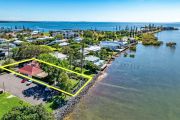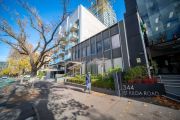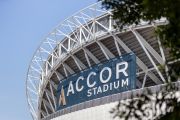
Office vacancy nudges upward as tenants wait out uncertainty
Office vacancy rates in every mainland CBD have edged up over the past quarter as major corporate occupiers sat longer on any potential expansion decision, in the face of rising inflation and economic uncertainty.
While the headline national vacancy rate over the 2021-22 financial year remains unchanged at 14 per cent, offices across Sydney, Melbourne and the other capitals became a little emptier in the 2022 second quarter. Sydney’s vacancy rate tipped up to 13 per cent, Melbourne went to 15 per cent and Perth’s vacancy level has passed 20 per cent, according to figures compiled by JLL.
“Corporate Australia is attempting to navigate a path through a range of factors from geopolitical risks to rising cost pressures. In some specific cases, this is delaying occupier decision-making,” JLL head of research for Australia Andrew Ballantyne said.
Unemployment in June hit a 48-year low at 3.5 per cent, official figures this week show. Such a tight jobs market is likely drive inflation higher, in turn increasing the prospect of higher interest rates, making financing more expensive for business.
At the same time, as the embrace of flexible working patterns becomes more deep-rooted, major corporates are working harder to make their workplaces more appealing, through re-designs or moving into higher-standard premises in a flight to quality.
Daily office occupancy in most CBDs levelled off during June as illness and the embrace of working from home put the brakes on the anticipated return to workplaces.
Overall, Sydney’s CBD’s office market recorded positive net take-up of office space of 2400 square metres over the second quarter and of 29,000 square metres over the full financial year.
“While the headline vacancy rate remains above the long-term average, the core precinct is very tight and we have seen a number of tenants miss out on their preferred options,” JLL’s national head of office leasing Tim O’Connor said.
“The strength in occupier demand for higher-quality assets is reflected in positive prime-grade take-up at the expense of lower-quality assets.”
In the Melbourne CBD an additional 21,300 square metres of office space was taken up over the 2021-22 financial year even as the city grappled with extensive lockdowns.
While major tenants are taking up space in new buildings – such as Aware Super’s move into 555 Collins Street – landlords who invest in significant refurbishment are also filling space left vacant in older buildings. Super fund investor and developer ISPT has secured life insurance giant TAL as the anchor tenant for a 1970s Bourke Street tower previously occupied by the National Australia Bank.
“The broader Melbourne CBD is more active with an increase in pedestrian traffic and a sharp reduction in CBD residential vacancy rates. Office leasing activity is strongest in the sub-500 square metres cohort of the market and a number of larger organisations are becoming more active,” Mr O’Connor said.











